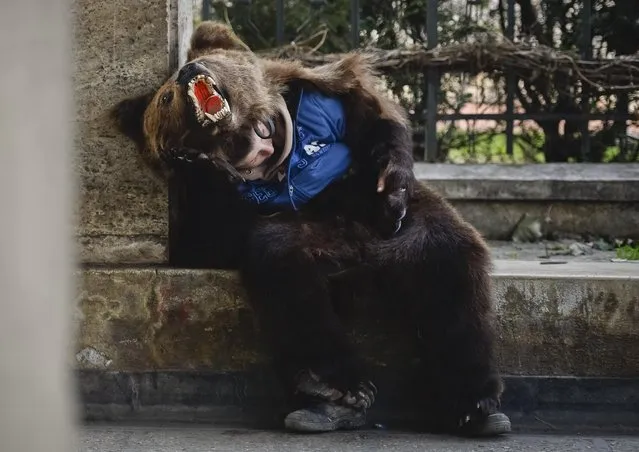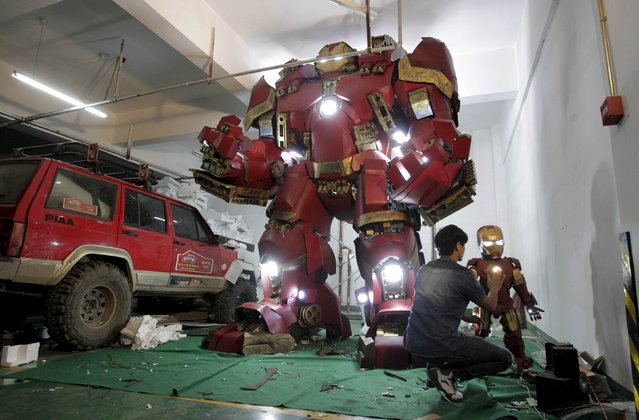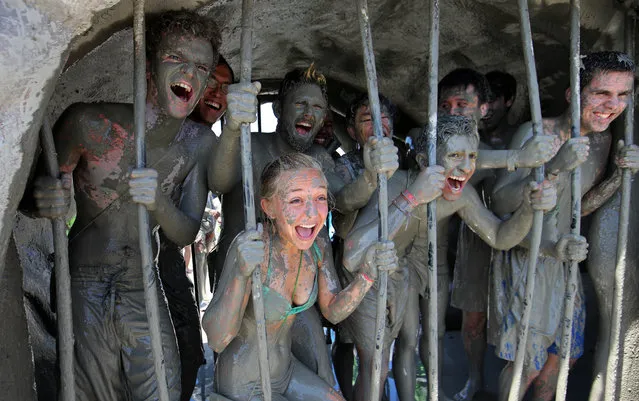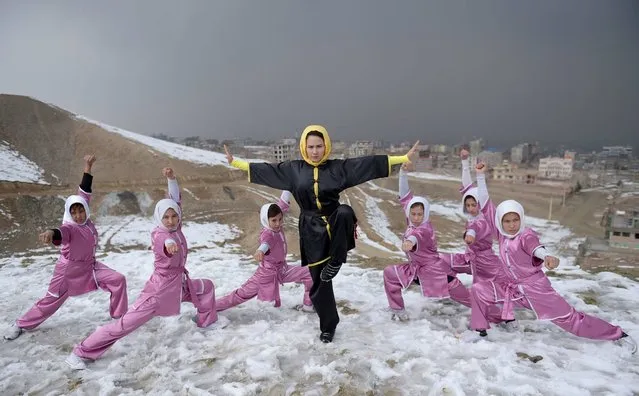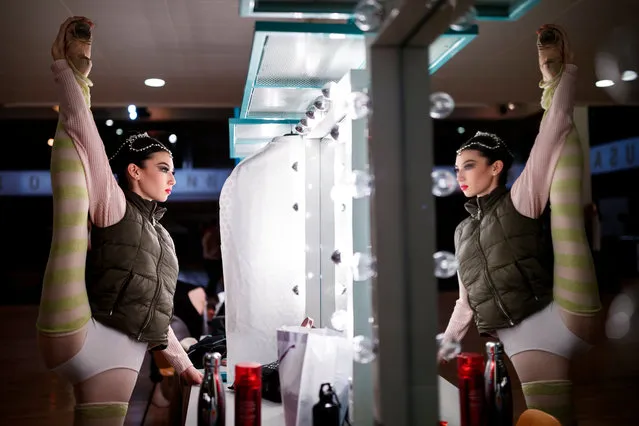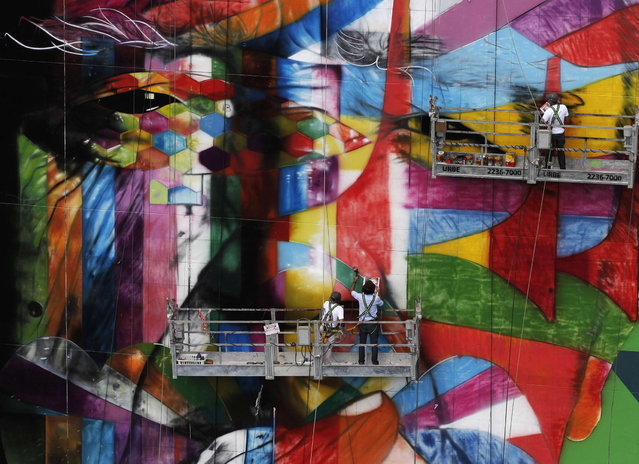
Brazilian graffiti artist Eduardo Kobra (C) puts the final touches to his piece of art in tribute to Brazilian architect Oscar Niemeyer, next to his assistants, at the financial center on Sao Paulo's Avenida Paulista January 22, 2013. Kobra created the 56-metre (61-yard) tall graffiti artwork as a tribute to Niemeyer, one of the 20th century's most influential modernist architects. Niemeyer died in December 2012, aged 104. (Photo by Andre Penner/AP Photo)
24 Jan 2013 09:22:00,post received
0 comments

